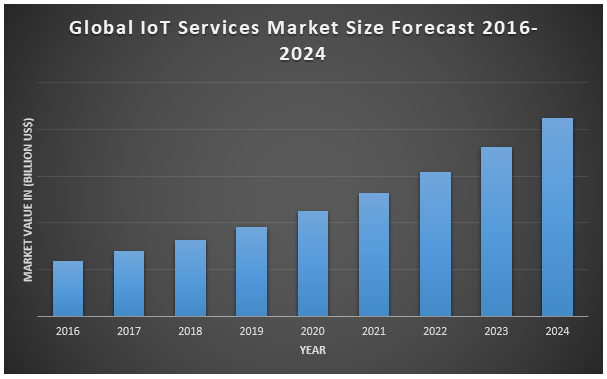The semi-autonomous vehicles market, in terms of volume, is projected to grow at a CAGR of 21.2% from 2017 to 2022 and
Autonomous Vehicles market in terms of volume, is projected to grow at a CAGR of 67.32% from 2025 to 2030. In this study for semi-autonomous vehicles, 2017 has been considered as the base year and 2018–2026 as the forecast period for estimating the market size. However, for autonomous vehicles, 2024 has been considered the base year and 2025–2030 as the forecast period for estimating the market size. The market volume is 10.78 Million Units in 2017 for semi-autonomous vehicles and estimated to be 0.18 Million Units in 2024 for autonomous vehicles.
Need of Semi-Autonomous and Autonomous Vehicles
• According to Bob Joop Goos, Chairman (International Organization for Road Accident Prevention) Over 90 per cent of accidents accounting for human error
• As per data provided by WHO Without sustained action, road traffic crashes are predicted to become the seventh leading cause of death by 2030
According to maximize market research more than 92% of road accidents across the globe are caused primarily due to human errors. With the adoption of autonomous vehicles, also known as driverless vehicles could save significant number of lives. Autonomous vehicles can drive themselves without any human intervention, capable to read and sense the environment and operates without human input with the employment of inbuilt software, sensors, and communication systems. Many major players are aggressively focusing on the development of semi-autonomous and fully autonomous vehicles to satisfy customer demand and to remain competitive.
Rising concerns about vehicle safety, security and efficient driving experience and increasing Integration of Technology in automotive sector are trending the overall semi-autonomous and autonomous vehicles market. However, High system integration Cost and less Consumer acceptance to automation will restrain the market growth. Highest revenue generating region is North America 2016; Followed by Europe. Increased customer base and high disposable income of end-users in these regions are driving the demand for high-end vehicles, and ultimately lead to increasing R&D innovations by local and international automotive OEMs in North America and Europe region.
Key Highlights:
• Assessment of market definition along with the identification of key players and analysis of their strategies to determine the competitive outlook of the market, opportunities, drivers, restraints and challenges for this market during the forecast period
• Complete quantitative analysis of the industry from 2017 to 2026 to enable the stakeholders to capitalize on the prevailing market opportunities
• In-depth analysis of the industry on the basis of market segments, market dynamics, market size, competition & companies involved value chain
• Market analysis and comprehensive segmentation of Semi-Autonomous market based on level of automation, component, ADAS features, fuel type and geography (region wise) and Autonomous Vehicles market based on component, fuel type and geography (region wise) and geography to assist in strategic business planning
• Semi-Autonomous and Autonomous Vehicles market analysis and forecast for five major geographies North America, Europe, Asia pacific, Middle East & Africa, Latin America and their key regions
Research Methodology
Research methodology used in this report contains various secondary sources including International Organization of Motor Vehicle Manufacturers (OICA), China Association of Automobile Manufacturers (CAAM). Bloomberg, Hoovers, Factiva are some of the sites that are being referred to gain insights about Semi-Autonomous and Autonomous Vehicles market. Experts from top manufacturing companies along with other stakeholders have been considered. This is done to validate and collect critical information for evaluating trends related to this market during the forecast period. Top-down and bottom-up approaches have been used to estimate the global and regional size of this market. Data triangulation techniques along with other comparative analysis are also used to calculate the exact size of the Semi-Autonomous and Autonomous Vehicles market globally.

Key Players in the Semi-Autonomous and Autonomous Vehicles Market Are:
• Infineon Technologies
• Continental
• Robert Bosch
• NXP Semiconductor
• Texas Instruments
• Renesas Electronics
• Valeo
• Magna
• ZF
• Delphi
• Denso
• Cisco
Key Target Audience:
• Research and Consulting Firms as well as Venture capitalists and startup companies
• Component and Raw Material Suppliers
• Tier 1 manufacturers & Automotive associations
• Government , Legislative and Regulatory Bodies
• Vehicle manufacturers/OEMs Traders and Stakeholders Operating In the Sector
• Automotive software providers
• Technology Providers & Software Developers
• Service Suppliers
Scope of the Report : Research report categorizes the Semi-Autonomous vehicle market based on level of automation, component, ADAS features, fuel type, and geography (region wise) and Autonomous Vehicles market based on component, fuel type, and geography (region wise) Market size by value is estimated and forecasted with the revenues of leading companies operating in the Semi-Autonomous and Autonomous Vehicles market with key developments in companies and market trends
Key Players in the Semi-Autonomous and Autonomous Vehicles Market Are: • Infineon Technologies • Continental • Robert Bosch • NXP Semiconductor • Texas Instruments • Renesas Electronics • Valeo • Magna • ZF • Delphi • Denso • Cisco



Clival Database: Your Trusted Partner in the Drug Development Process
ReplyDeleteAt Clival Database, we specialize in the comprehensive drug development process, from initial drug discovery to final approval. Our expertise in drug discovery and development ensures innovative solutions tailored to meet the highest standards. With a focus on clinical trials, we meticulously oversee each phase to guarantee safety and efficacy. Our cutting-edge approach to drug discovery positions us at the forefront of the industry, delivering groundbreaking treatments. Trust Clival Database for unparalleled support and excellence throughout your drug development journey, ensuring successful outcomes and transformative advancements in healthcare.